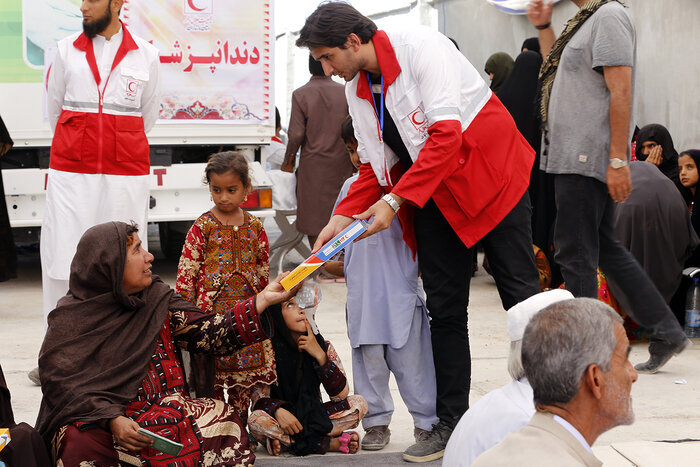Water donation campaign to begin within days

TEHRAN – A water donation campaign will be launched in the next few days aiming to supply water and provide healthcare services to people in drought-affected areas, Vahid Salimi, the head of the Iranian Red Crescent Society’s Volunteers Organization, has said.
The campaign, called Nazr-e Ab (literally meaning water donation), was launched four years ago, following the drought crisis in the southern and southeastern provinces of the country, with the aim of supplying fresh water to deprived areas with the help of the people and the IRCS.
It was first held in August 2018, in the southeastern province of Sistan-Baluchestan which went into trouble after the Hamoun wetland drained and the rainless sky left many in dire need of drinking water.
The campaign has two main aspects; the first one centers on water supply issues including desalination of water, rehabilitation of qanats, improving wells and water quality, and filtering and sanitation of reservoirs.
And the second aspect focuses on health issues including health care services, free diagnosis, and providing food packages to the deprived.
The phenomenon of drought is hitting the country, especially in the southern and southeastern provinces, and naturally, its complications, including the lack of access to clean and sufficient drinking water, the faster proliferation of environmental bacteria, etc., can seriously affect the health of residents, and even cause the outbreak of contagious and infectious diseases, Salimi explained.
Through the fifth phase of the campaign, volunteer doctors and paramedics of the Red Crescent groups are dispatched to 100 identified areas in the provinces of Hormozgan, Sistan-Baluchestan, Kerman, and South Khorasan to provide preventive training as well as healthcare services to deal with food-borne or infectious diseases caused by the water crisis.
Since ancient times, Iran has been constantly struggling with water shortage, which caused the creation of qanats, so that people actually accepted that water is scarce in the country.
But for several years, along with the industrial and agricultural development, it seems that the available water resources have been used unbridled, and the result is being on the verge of a water crisis.
4.8m people at medium to high risk
The amount of rainfall in Iran's main river basins from September 2020 to July 2021 was, in most places, substantially lower compared with the year-earlier period. Iran experiences frequent droughts and faces the prospect of more extreme conditions brought about by climate change.
The campaign centers on supplying water and providing health care services to people in drought-stricken areas.
According to current assessments, parts of Iran are facing a rainfall anomaly which has had an observed impact on vegetation and agriculture. Of particular concern is that these drought impacts have been observed in northeastern Iran in areas bordering Afghanistan.
The Iranian Red Crescent Society estimates that 4.8 million people are at medium to high risk of drought-related impacts, mostly in remote and rural areas of the provinces.
It reports that 29 of 31 provinces, and especially seven – South Khorasan, Kerman, Sistan-Baluchestan, Hormozgan, Khuzestan, Isfahan, and Khorasan Razavi – have been severely affected by the drought. The lack of safe and sufficient water supply for drinking, hygiene, agriculture, animal husbandry, and electrical power is having a devastating and increasingly unsustainable strain on households’ health, and income in addition to encouraging negative social trends and coping mechanisms.
Drought has so far incurred a loss of 28 trillion rials (about $107 million) to the environment, Hassan Akbari, deputy head of natural environment and biodiversity of the Department of Environment, has said.
Unfortunately, over 70 percent of the country is suffering from severe drought. The severity of the drought is devastating in areas such as the Zagros, which is both a source of water and natural habitats, he lamented.
Droughts may affect three-quarters of the world by 2050
The United Nations has warned that droughts may affect over three-quarters of the world’s population by 2050.
Droughts are among the greatest threats to sustainable development, especially in developing countries, but increasingly so in developed nations too.
The number and duration of droughts have increased by 29 percent since 2000, as compared to the two previous decades (WMO 2021). When more than 2.3 billion people already face water stress, this is a huge problem. More and more of us will be living in areas with extreme water shortages, including an estimated one in four children by 2040 (UNICEF). No country is immune to drought (UN-Water 2021).
FB/MG
Leave a Comment